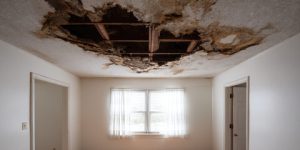
Oahu Landscaping Services boosts both curb appeal and resale value. They do this by incorporating features that are attractive and functional, such as energy-efficient plantings that reduce cooling costs and evergreen shrubs that protect against winter winds.
Landscapers also offer hardscaping, which is the permanent components of a garden such as patios that provide a comfortable spot to relax, walkways to safely guide visitors and retaining walls to solve drainage issues.
Enhances Curb Appeal
A well-landscaped property creates a strong first impression on visitors, setting the stage for a positive experience. From a home buyer’s perspective, a well-maintained front yard is one of the most important factors in determining a home’s value. In fact, studies show that homes with attractive landscaping appraise for more than those without.
A professional landscaper can transform your property with design, installation, and maintenance services. They’ll bring your vision to life and create a beautiful outdoor space that can be enjoyed for years to come.
Residential curb appeal landscaping services focus on the front of your home, creating a dramatic visual effect that draws the eye and creates a welcoming entryway. Eye-catching plantings can include blooming perennials like Black-eyed Susans or purple coneflower, or shrubs like hydrangeas and pyracanthus. Landscaping professionals can also add interest with hardscape elements, like retaining walls, patios, fences, and garden structures.
Commercial curb appeal landscaping includes the design and maintenance of outdoor spaces for offices, retail buildings, restaurants, and other commercial facilities. A well-maintained commercial landscape increases professionalism and demonstrates that the business cares about its image. Landscaping services for commercial properties can include sod installation, water management, seasonal clean-ups, pruning, mulching, and weed removal.
In addition to flowers, trees, and shrubs, commercial landscapes often feature hardscape elements like pathways and paving materials that enhance the look of a property while offering functional benefits. For example, using a natural stone paver walkway is a durable and aesthetically appealing option. It also requires less maintenance than a poured-in-place sidewalk.
Landscapers can also install and maintain irrigation systems to ensure that plants receive the proper amount of water. They may also create and maintain gardens, lawns, and beds by using native plants that thrive in the local climate and soil conditions. These plants will require less water and maintenance than non-native varieties, and they’ll provide consistent color throughout the year.
A landscape that incorporates a variety of plant species and colors creates a rich, inviting aesthetic. Adding organic mulch to tree rings and garden beds offers a pleasing appearance and helps the soil retain moisture while providing essential nutrients to the plants.
Increases Property Value
Investing in landscaping upgrades offers significant return on investment (ROI). At Zimmerman Mulch, we’ve been in the business for 27 years, and our experience is in line with studies that indicate well-designed landscapes enhance property value.
A quality landscaper uses plants, soil, hardscaping elements like walkways and patios, and water features to design functional outdoor spaces that reflect a client’s tastes and complement the natural environment. Landscapers are skilled at creating visual appeal, but they also know how to plan for long-term sustainability, ensuring that the landscaping will remain appealing and functional for as long as the property is owned.
Functional outdoor spaces increase property value by offering additional areas for relaxation, entertainment, and family activities. A paved walkway provides a convenient path to the front door, a backyard patio offers space for entertaining, and retaining walls create a designer look for sloped yards.
Professional landscaping services can help you create a functional and attractive outdoor space that will set your home apart from the competition. If you’re thinking about selling your property in the future, a well-groomed yard will make it easier to attract buyers and fetch a higher price on the market.
Landscaping upgrades can help to reduce energy costs, a key factor in determining home value. For example, strategically placed trees and shrubs provide shade that lowers cooling bills in summer, while evergreens act as windbreaks to reduce heating expenses in winter. This eco-friendly approach to landscape design is becoming more popular with buyers and can help set your home apart in the market.
Proper landscaping can also increase a home’s safety and security. For instance, well-placed bushes and shrubs provide privacy and deter intruders. In addition, a properly-installed drainage system prevents standing water that can damage your yard, foundation, and home.
In addition, a reputable landscaping service will ensure that all work performed meets both local and state regulations. This will protect the property owner from liability issues and potential fines.
Increases Resale Value
As homeowners know, regular lawn care and landscaping maintenance can keep properties in tip-top shape. In many cases, well-maintained homes with beautiful landscaping sell faster and at a higher price than homes that are neglected. This is because potential buyers see the lush greenery and well-kept yard as an indication of how much care was put into the property, making it more appealing and worth the investment.
A weed-ridden front lawn and overgrown shrubs can deter a potential buyer, leaving them with a negative first impression of the home. However, a professional landscaper can help to remedy these issues with routine mowing, pruning, and annual mulch applications. Additionally, if you have a sloping yard, a professional can help to prevent soil erosion and offer solutions like retaining walls that add interest and function to the space.
Thoughtful landscaping can increase a property’s value in other ways, too. For example, strategically planted trees and evergreen shrubs can provide natural shade, reducing energy costs in the summer. And, in the winter, these plants can act as windbreaks, lowering heating bills. These types of eco-friendly features are increasingly sought after by potential buyers, making them a great way to boost a property’s appeal and resale value.
Hardscapes, such as patios, walkways, and driveways, are also a great way to add value to your property. For instance, a paved walkway creates a welcoming entryway, while a new backyard patio can be the perfect place to entertain guests. In addition, a professional landscaping service can install various hardscapes that are more durable and low-maintenance than concrete options, offering the same aesthetic with an increased lifespan and resale value.
Landscaping services can make or break a home’s curb appeal and, in turn, its resale value. But, if you’re not ready to sell your home in the near future, there are several other ways to improve your curb appeal and your property’s value without spending a fortune. From planting new flowers to upgrading your driveway, there are a variety of projects that can make a significant difference in your home’s appearance and resale value.
Increases Home Value
The average homeowner often focuses on kitchen and bathroom upgrades to increase home value, but landscaping also provides a significant return on investment. Studies have shown that well-maintained, attractive landscaping increases real estate values by 7% or more, while unattractive landscapes can decrease property value by as much as 30%.
In addition to adding aesthetics, good landscaping can make a home more energy efficient, helping lower utility costs. Well-placed trees can provide shade and reduce wind speed around the house, while lush green lawns and shrubbery can help retain moisture during droughts.
Hardscapes such as patios, walkways, fire pits, and water features are high on the list of desirable landscaping features for prospective buyers. These outdoor living spaces are ideal for entertaining, relaxing, and spending time with family and friends. A professional lawn care or landscaping service can install these elements with a cohesive design that enhances the look of your yard and complements your home’s architecture.
Water features like fountains, ponds, and streams add a sense of calm to your backyard and create a beautiful focal point that will attract potential buyers. However, it is important to consult with a landscaping service to ensure these features are properly installed and maintained to avoid costly repair bills down the road.
Overgrown trees, weeds, and other plants can distract from the beauty of your landscape and detract from the overall curb appeal. A landscaping service can ensure your yard is mowed, edged, and free of overgrowth to create a clean, well-maintained appearance.
Adding features such as a pool or outdoor kitchen can help you sell your home faster and at a higher price, especially if they are well-designed and professionally-installed. However, you should be aware that these features can be expensive and require regular maintenance. A reputable lawn care or landscaping service can advise you on the best options to maximize your budget and boost resale value.
At Zimmerman Mulch, we have 27 years of experience in the landscaping industry and agree with the research that shows that a well-maintained, quality yard can increase your real estate value by up to 7%. Contact us today to learn more about how we can improve your landscaping to increase your home’s resale value.








